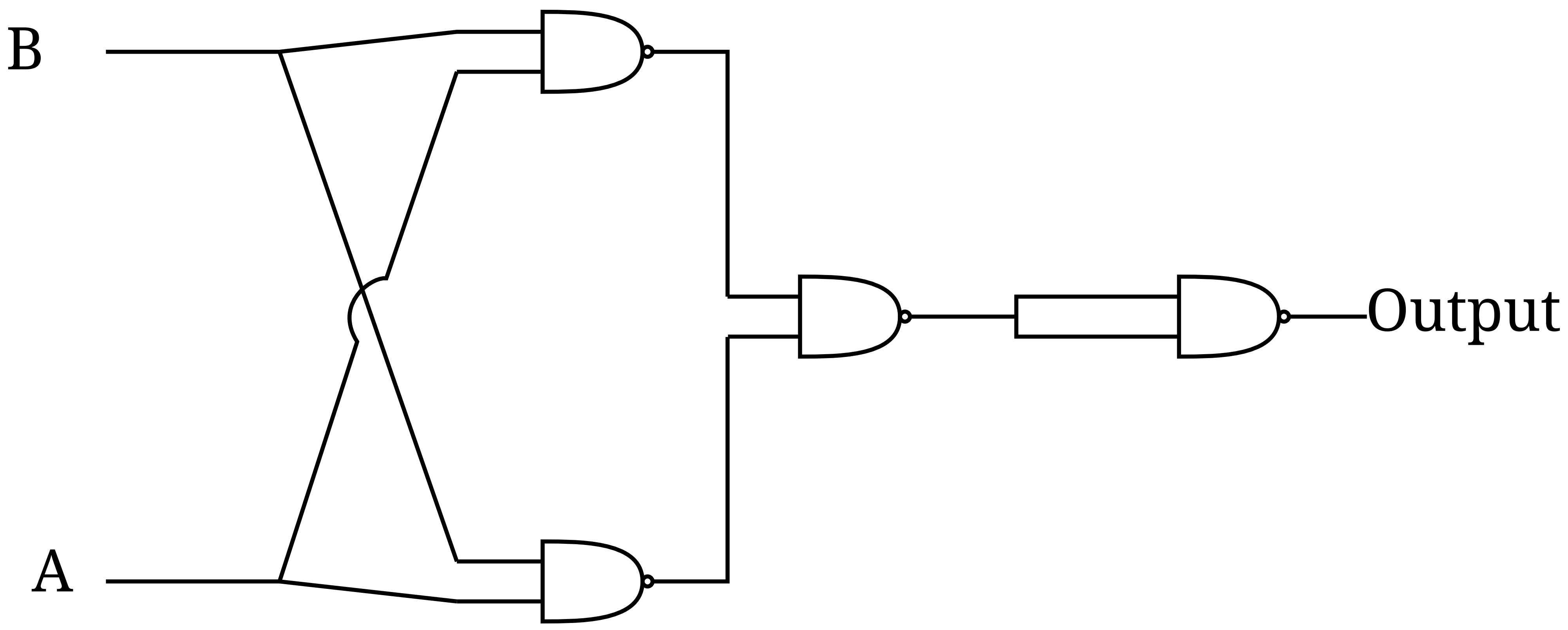A question that had popped up in my head once - how many NAND gates would it take to build a larger, "meta-NAND" gate?
Your task is to build a black-box circuit that takes two input wires A and B and returns one output wire that satisfies A NAND B, subject to the following restrictions:
- You must use at least two
NANDgates in this construction (and no gates other thanNAND). - You may not have null configurations of gates - that is, systems of gates that are equivalent to a gateless wire. (For example, two
NOTgates in series are a null configuration.) - You cannot have any stray wires (discarded values or constants).
Fewest gates wins.

